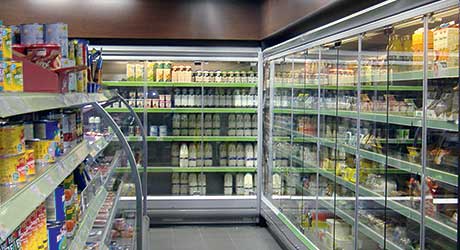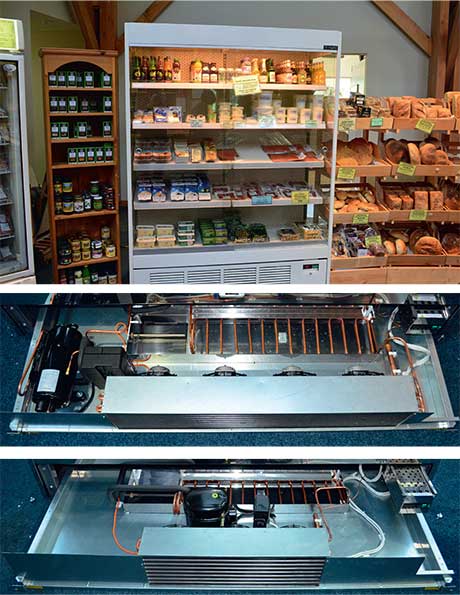Test the effect and make your refrigeration choice

CHILLED food and drink products are becoming ever more important for c-stores but at the same time energy costs are soaring.
Alex Dalglish, of refrigeration, air conditioning and shopfitting specialist firm Vertex, is in no doubt that efficient methods of refrigeration, including the use of doors on cabinets, will save money but says the retailer should find out how much that saving will be and then make their decisions.
The firm has extensive recent experience both of fitting doors to existing units and of installing units in refitted and newly built stores.
When it comes to retro-fitting there can very different economic effects that depend on the age of the units that are having the doors fitted.
“We’ve done tests on door installations and there’s no doubt that on older equipment it definitely works, he said.
“We can meter the existing energy use and then calculate the saving. All the retailer has to do is to work out a 52-week saving, take the cost of the doors and divide it by that amount to find how long it will take for the investment to pay for itself.
“Depending on when you plan to change equipment I’d say that if the payback period is around two and a half to three years then it’s worth doing.”
With more recent equipment, which is likely to be more efficient than the older units, the saving will be less and the payback period longer and that might give the retailer some tough decisions to make. There are other advantages to doors of course, they guard against dust and can protect the goods from excessive manhandling.
The Apollo multi-deck chiller with sliding doors, top right. The lower pictures on the right show one of the reasons costs fall with doors fitted. In the middle picture is the engineering tray used in the running of an Apollo unit without doors. The lower picture shows the much smaller configuration required when the unit is supplied with doors.
He recognises that some retailers are nervous about installing doors but he says the firm has now carried out many retro-fits, both north and south of the border, has not heard of problems and has not been asked to go back and remove doors in any of the projects.
On any new installation he says it’s important to remember the tax relief that’s available for approved energy-efficient equipment under the Enhanced Capital Allowance and to ensure that if you do go for ECA-appropriate cabinets that you do so for all the other components of the system too.
And he also advises retailers to think of running costs as well as capital costs when installing refrigeration units, to consider leasing if that makes it more affordable to choose highly efficient kit and to consider a maintenance contract after warranties expire.
Retailers with older equipment should check with their contractor to see if it requires R22 gas, which is now well on the way to being phased out. No more of the gas is being made, the price of the remaining gas is likely to rise and it will eventually run out, he said.
• Refrigeration equipment provider Capital Cooling is another firm that stresses the importance of understanding running costs, the potential tax savings offered by the ECA and other benefits over and above the straightforward cost of equipment when choosing chiller systems.
And there are other things to consider when you’re thinking chiller, it says.

The firm has been working with a retailer to develop a chiller that has been designed and made to provide more space to display products.
The low-front, standard-height, integral multideck open-front chiller is part of Capital Cooling’s Troy range.
Capital Cooling marketing co-ordinator Fraser Scotcher said the low front “maximises the merchandising window and increases shelf space”.
The Troy unit is also available in a version with full glass doors.
Capital Cooling has also been working with a snack brand on development of its Apollo integral multideck chiller, available with and without glass doors. And it has recently added an energy-saving device to its portfolio.
The intelligent refrigeration control system, CAP-IRC, can be fitted to any multideck chiller, and can reduce power consumption by up to 30%, said Scotcher.
The device analyses the energy required to run the compressor by checking every 500th of a second on the power being used, it then manipulates the compressor’s operation to optimise efficiency.


















